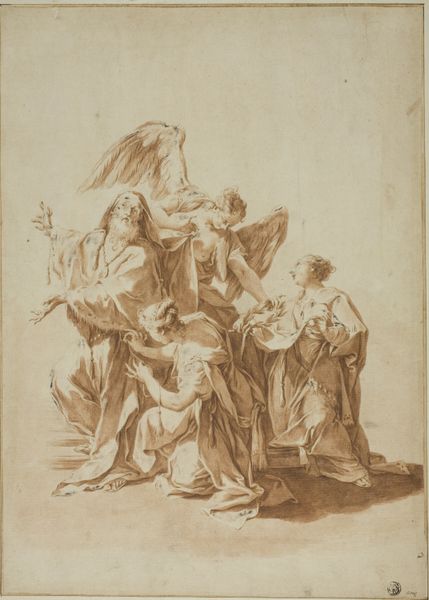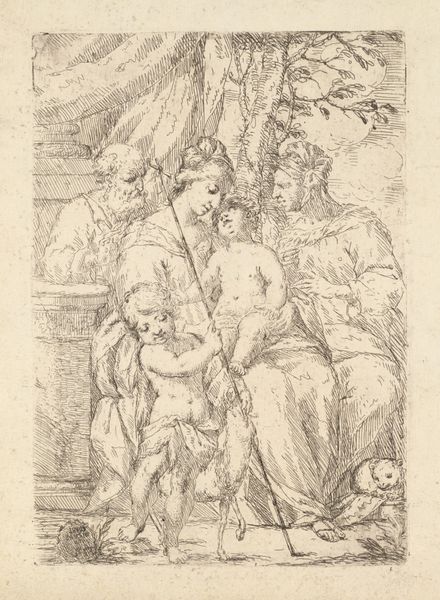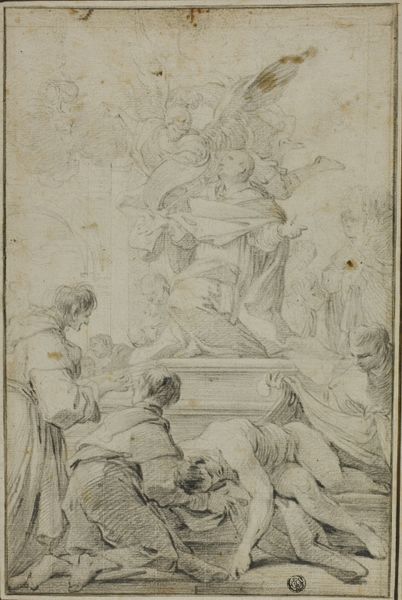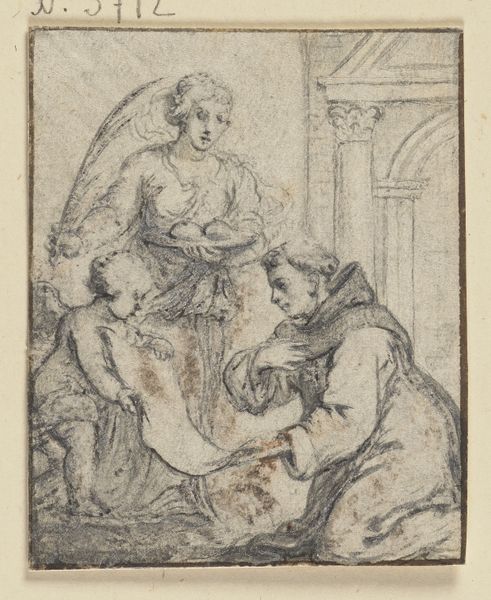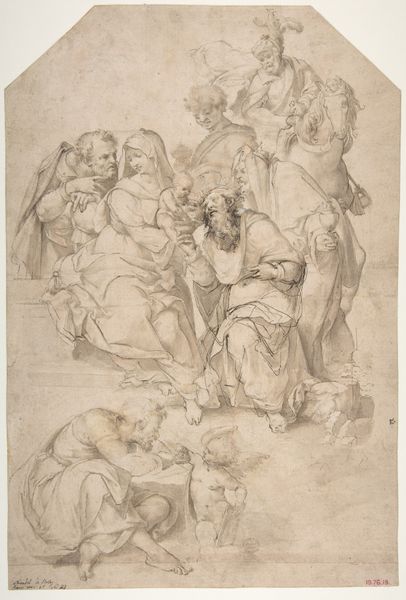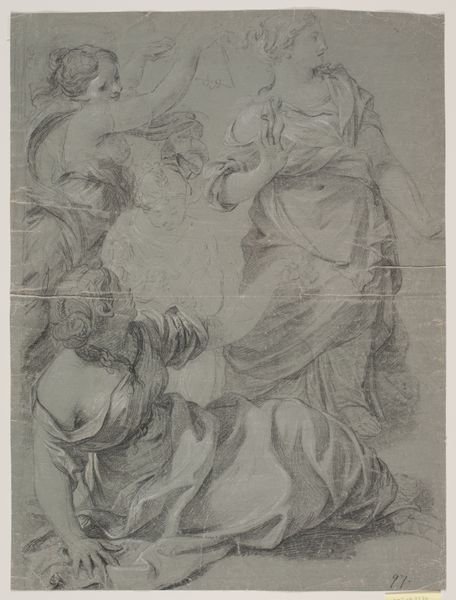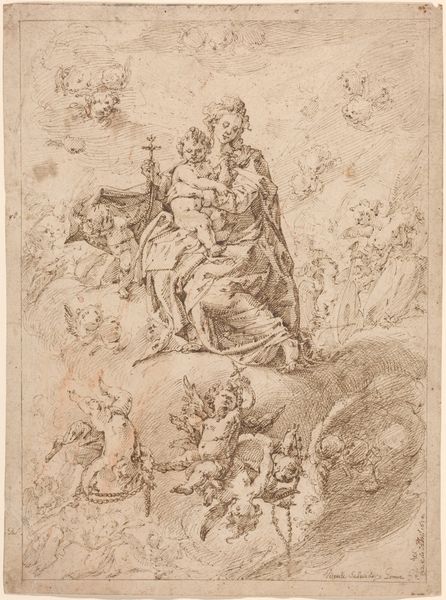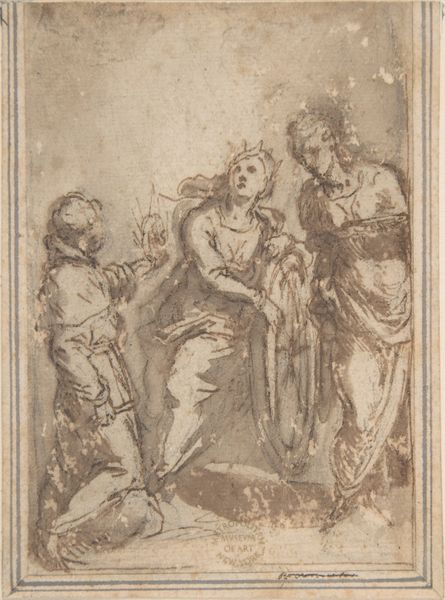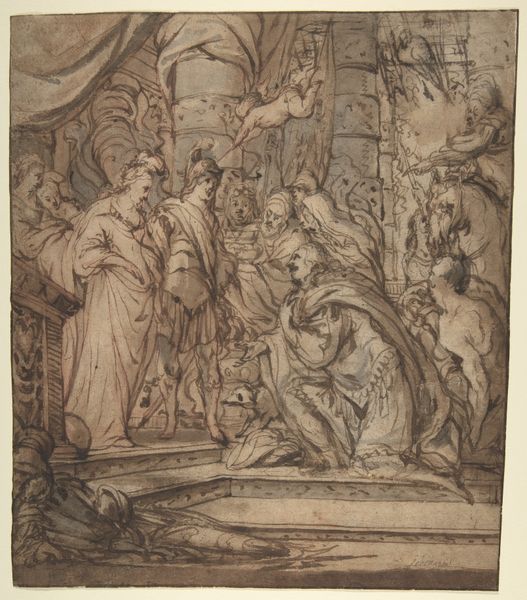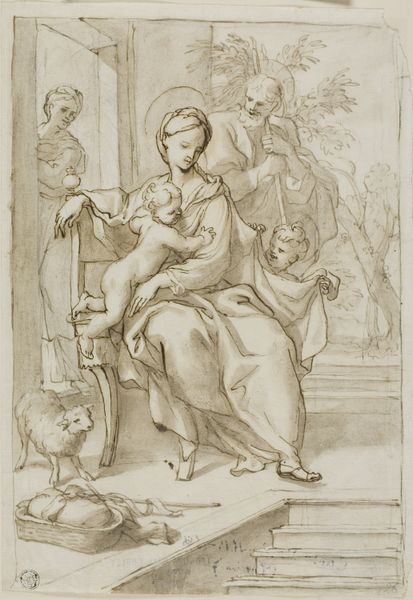
drawing, ink
#
drawing
#
narrative-art
#
ink painting
#
figuration
#
11_renaissance
#
ink
#
history-painting
#
academic-art
Dimensions: 152 mm (height) x 78 mm (width) (bladmaal)
Curator: This is a drawing entitled "Triumphal entry of a Roman general," dating back to the 1590s or early 1600s. It resides here at the SMK, the Statens Museum for Kunst. The medium is ink. Editor: The first thing that hits me is the incredible movement suggested with so few lines. It's like a burst of energy caught mid-parade. Curator: It’s interesting you pick up on that, because the dynamism is partly an effect of the ink itself. You can see the artist is making quick, confident strokes that contribute to the overall sense of grandeur, even though it’s just ink on paper. Academic art valued confident strokes, conveying a powerful skill from the artists in its rendering. Editor: Grandeur is the right word. Even in monochrome, you get a sense of spectacle and power, doesn’t it speak to the relationship of a hero on a winning parade with all the people cheering you on. Almost dreamlike, capturing not the specifics of the triumph, but the idea of it. Curator: The historical context is essential to note here. The idea of "triumph" in Renaissance art would be interpreted as the culmination of political might of its benefactor, the celebration not simply for the general's accomplishment but more to flaunt power to an audience who is in control of said benefactor. These works acted as material testaments and objects within the larger history. This triumphal procession could potentially depict an entry of Charles V, although this identification is not definitively confirmed by sources on record. Editor: The anonymous hand does allow some interpretive wiggle room. Is it an actual triumph, or a shadow of one? I mean look at the laurel crown, almost mocking itself, being simply composed of thin strokes? Or a wish for the glories of the past? There is a strange, contemplative energy to it. Almost melancholic. Curator: Interesting how our viewpoints differ. For me it highlights production itself – a clear understanding the value lay less in finished object, more skill of artists itself— and its cultural relevance with these works becoming historical accounts. Editor: It's amazing how much impact simple material and basic technique can create even today with audiences looking into them centuries later. I’ll carry that energetic vision with me. Curator: Indeed, a fascinating testament to the artistic, cultural, and historical value held in materials. I’ll carry the image's context as an object with a significant historical narrative through skilled labor.
Comments
No comments
Be the first to comment and join the conversation on the ultimate creative platform.
